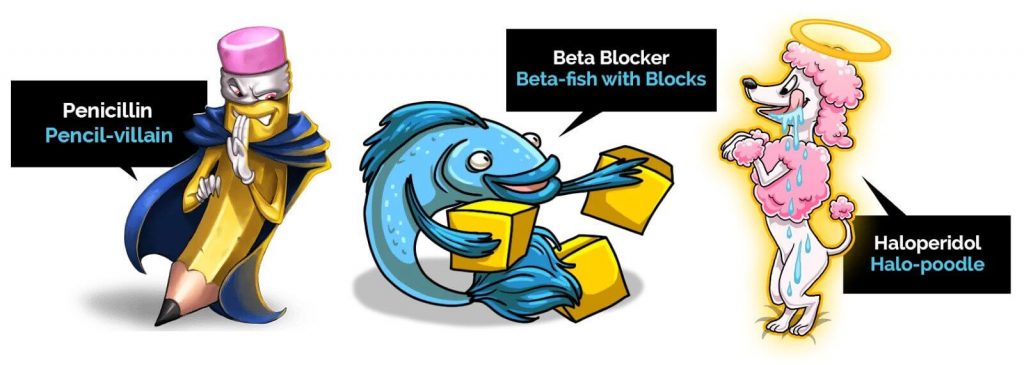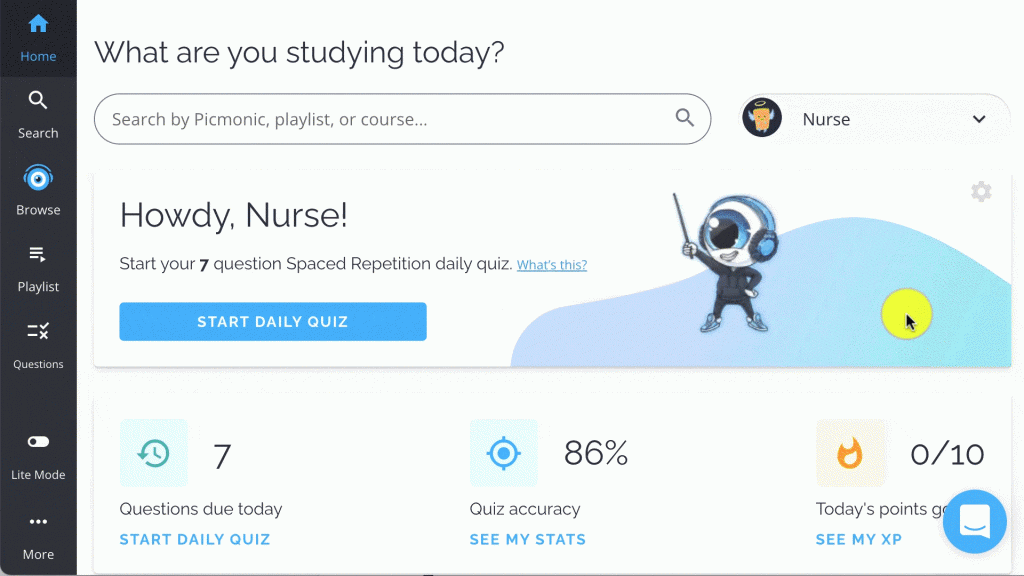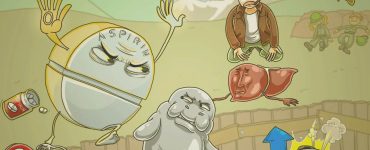It’s hard to remember—especially when you’re a student presented with lists of information, facts, and comprehensive concepts. So when textbook studying gets too boring or isn’t enough to help you ace your exams, you’re going to have to turn to old reliable mnemonic devices. Wacky characters with word-play associations may seem like a silly way to remember important concepts, but the fact is that mnemonics work—it’s science.

What Are Mnemonic Devices
Mnemonic devices are defined as any kind of memory technique that helps you remember! Yep, it’s that simple. There are some well-known strategies and devices out there (we’ll get into that later), but really, if it helps you remember, it’s technically a mnemonic.
Why Mnemonics Are Effective
Do mnemonics really work? The answer is yes! Mnemonics are an efficient memorization technique because they help you learn, retain, and recall information easily. To put it simply, your brain encodes, stores, and retrieves memories. Mnemonics help improve your long-term memory. How? Well, they appeal to aspects of your short-term memory’s encoding criteria!
Here’s the science behind it:
Get ready, get set, and process. When information is presented to you, it begins to encode in your brain, but how well it is encoded and where it is encoded is dependent on how the information is presented to you. There are a few theories of memory phenomena that are at play when it comes to mnemonics.
1. Dual Coding Theory
When verbal and nonverbal information is presented simultaneously, we process it through two separate brain channels. Since both channels are activated at the same time, we are more likely to form a stronger memory. For example, if you see the color red and say “red” at the same time, you’ll remember the color.
2. Picture Superiority Effect
Our brains love visual stimuli. Pictures are easier to remember than text—and are more fun to look at. This effect also speaks to dual coding theory. With imagery, you’re activating a different part of your brain.
3. Von Restorff Effect
Also known as the isolation effect, the Von Restorff effect predicts that when multiple similar stimuli are presented, your brain is more likely to recognize and remember the different one. The differences will stand out to you, maybe not easily at first, but they will once you notice them. For example, if you see a pair of triplets in matching outfits, but one is wearing a blue bow unlike the others, you’ll remember! This is especially true if one is really not like the others–-like their bow has a giant ice cream stain on it.
4. Humor Effect
Emotions make it more likely for us to remember things. Whether it’s a hilarious joke or a tear-jerking tale, your brain will remember the information because it provoked your emotions. Maybe you won’t laugh or cry the next time you see or hear it, but you sure will recall the moment you learned it.
5. Baker-Baker Paradox
This paradox plays on association. Essentially, it is easier to remember someone’s name if you know a fact about them like their occupation. Then, you can imagine them doing their job and are more likely to remember their face and name, improving your memory and recall. In this example, John Baker is an actual baker! Who would’ve thought?
How to Use Mnemonics to Study
So, how do these work when it comes to studying? Well, you can create mnemonic acronyms like PEMDAS or ROYGBIV, but those can get a little tricky with more complex topics. Mnemonics come in all different shapes and sizes, and it’s best to use the ones that appeal to your brain’s memory the most.
Picture mnemonics that tell a unique, funny story are an example of a great study tool that speaks to all the memory phenomena we talked about earlier. Plus, you don’t have to make your own (unless you want to). Thankfully, as a student in this modern world, you have online study tools like Picmonic at your disposal.
Whether you’re a hardworking nursing student or an aspiring healthcare professional, Picmonic has a program for you. Picmonic’s research-proven visual learning system uses whacky characters tied to hard-to-learn concepts to create unique, unforgettable stories to help students remember more information in less time.

Students can generate their own mnemonics with Picmonic, take built-in rapid review quizzes to improve retention and memory recall, and access thousands of topics! This approach utilizes a comprehensive mnemonic strategy built for students.
What Are Mnemonic Strategies?
There are different mnemonic strategies out there. Overall, mnemonic strategies are ways mnemonics are used to learn.
In school, this looked like identifying keywords, chunking words or subjects, associating stories with concepts, using music to learn your ABCs, acronyms, and more. However, the most effective memory strategies use multiple mnemonics. Picmonic uses acronyms, storytelling, sound, visual imagery, and keywords that come together to form an effective mnemonic strategy to boost overall memory recall and retention in students. The proof is in the pudding.
Whether you use online study tools like Picmonic for mnemonics or have your own approach, there’s nothing like using mnemonics to learn something you enjoy. It’s science, after all.
Join today to get started.













